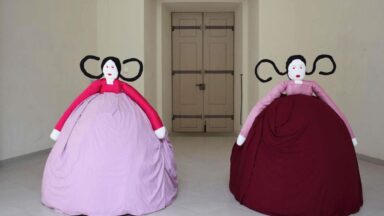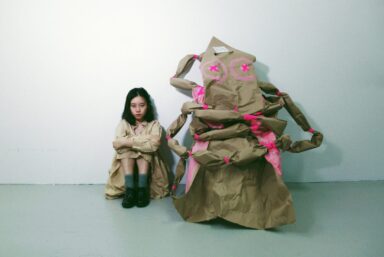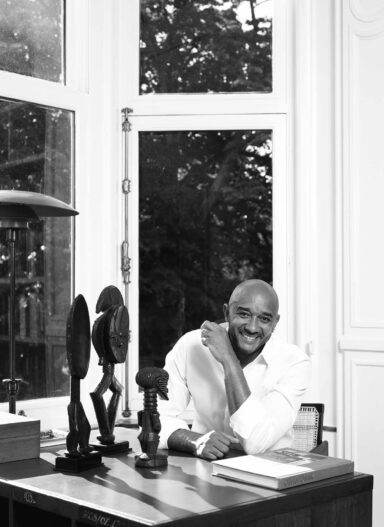A talk with Nanda Vigo on the occasion of the opening of her Global Chronotopic Experience in Milan
Text by: Annarosa Laureti and Fiammetta Cesana
That’s the 60s, Europe is abuzz: the cultural revolution in Milan takes hold among Brera district where young creatives join together in groups spreading their new vision of the world.
Demonstrations and debates rise around the most avant-garde and radical artists of the moment, such as Gio Ponti, Lucio Fontana and Piero Manzoni. And among these eminent men, who will change forever artistic trends in Italy and in the world, a new gem of contemporary art is born: Nanda Vigo.
Fascinated by the ability of light to shape the space, the young architect engages with new art experiments, developing an imaginative sensibility that leads her to reject the historicist division between art, design and architecture, and to promote a spiritual dimension of space through the enunciation of her Chronotopic Manifesto (1961).
Harmony, order and equilibrium are at the basis of her imagination, in which light, in its natural and artificial forms, is the protagonist of the opera and guides the individual towards a conditions of pure well-being.
At the inauguration of the Global Chronotopic Experience, the 82-year-old Vigo welcomed us into her own work, a cube made of glass and neon lights, temporarily transformed into our rainbow fashion stage.
A foreign body located in the center of the Spazio San Celso of the homonymous Basilica, which becomes an environment in itself where it is possible to undertake a space-time journey, abandoning the senses and letting yourself be guided by the flow of light.
Talking with us, but always keeping a watchful and attentive look on her own creature, the artist confesses that this is not the first time that one of her works attracts the world of fashion and entertainment: “My blue house liked a lot, as well as the house under the leaf made together with Gio Ponti. They have become sets of many films, both Italian and foreign”.
The epiphany at the age of seven, admiring the Casa del Fascio by Giuseppe Terragni in Como, paved the way to her endless research on the use of light bringing her to participate, while always claiming her autonomy, to different artistic experiences.
In the early 60s, Vigo binds in particular to that of the Zero Group, which shares the principle of “cosmic power”, favoring the exploration over the analysis. “I found myself well within the group because we worked at the same level”, she tells us.
In a short time the German group became for her a sort of traveling art family: “We were a group of about 30 artists and we traveled a lot. We exchanged our works around Europe, taking them with us under our arms – at that time there were no assurances of any kind – from gallery to gallery. We lived in a period of rebirth after the war and, as I always say, they were precisely the artists who formed the European Union, even before politicians and economists”.
In a world of men, made for men, Vigo, during the effervescent climate of those years at creative and socio-cultural level, makes contributes to mark the entrance of female figures in the artistic and professional panorama. “At the time the path was uphill, women were just incoming, now it is much easier.”
And when we ask her for a comment on the “mania” of denouncing by women today that is literally overwhelming and shaking the work field, she responds in a straight and peremptory way defining all this as an “exaggerated reaction”. “In the past making similar accusations wasn’t a good idea, if you did you became an outcast. In my time there was anarchy, and consequently freedom, so there was no need to “get an upgrade” with such expedients. It all started with the rise of companies, with employees, men and women, and with the birth of the hierarchy within them”.
Her expressive power sees therefore the aesthetic doctrines subordinated to the philosophical ones, something that today we can hardly imagine given the overabundance and opulence of images that pervade the art and fashion market. In a world like the current one, guided by the desire to appear and reach the long-awaited “15 minutes of celebrity”, Vigo sees a situation of stagnation, of “absolute zero”, in the contemporary art scene.
“Today the substitute for the currently absence of art is fashion, because it uses all the possible media that art, just as art, can’t use. We live a moment of transition, fashion is alive as it is proposed in a different way, through myriads of images, and it keeps changing by following the game rules and proceeding in a continuous movement that, actually, is ephemeral. In fact, fashion steals from art. They are different worlds that definitely come together with certain creators, but art is – and remains – always ten steps higher up”.
Reproducing in a modern key the Global Chronotopic Experience – created by the artist in 1967 and exhibited at the Galleria Apollinaire in Milan -, the message of her work “has remained unchanged since it is, in a certain sense, immutable. The idea is that of a feeling of wellness provided by the light and the colors of the rainbow. Inside the box, in fact, the individual is immersed in a never-ending rainbow. The only things that changed are the means used to set up the work, today much more technologically supported”.
According to Vigo, the problem of current artistic and intellectual values is the existence of too much welfare at economic and social level. “The hunger for change has gone, and it is due to ignorance, in the Latin sense of the word. Since creativity springs from research and it is an integral part of that”, she argues, “it is crucial to rediscover that creative desire which have been lost because of the lack of exploration”.
And finally the artist remembers us that “the only salvation resides in the planet and above all in the Light”.
Cover: Nanda Vigo and Lucio Fontana, 1969, Photo by Lotar Wolleh









